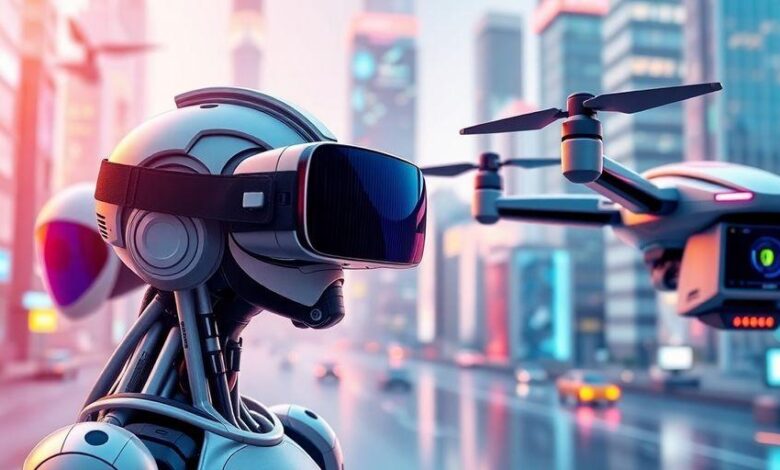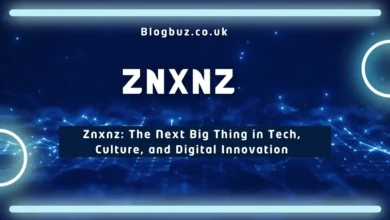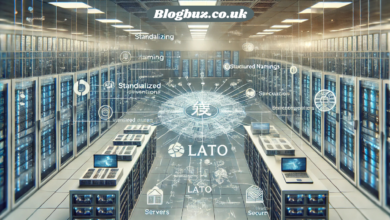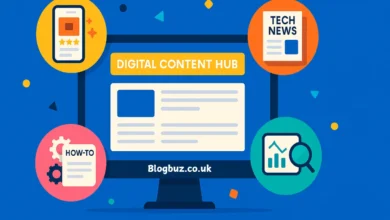The Impact of Emerging Technology on Society

Introduction
Emerging technologies are reshaping our world at a pace that’s hard to ignore. They appear in countless forms—from artificial intelligence (AI) to synthetic biology—and often have a profound impact on how we communicate, work, and learn.
According to the Stanford Emerging Technology Review, the essence of emerging tech lies in not just invention but the creative application of known technologies in fresh contexts.
This blog aims to delve into the multifaceted effects of these rapidly evolving innovations giving you insights into what’s happening now and what might come next and making.
- Understand The Impacts: We’ll explore how these technologies influence daily life, economies, and industries.
- Address The Upsides And Downsides: No tech story is purely positive or negative—there are nuances to consider.
- Prepare For The Future: By the end, you’ll have a clearer sense of where society might be headed and how to stay informed.
Ready to explore what the future holds? Let’s understand what’s happening.
1. Transformations In Communication
Things have changed from traditional to digital in a significant way. Here’s how:
- Past And Present: We’ve come a long way from letters and landlines to instant messaging and video calls.
- Driving Forces: Platforms like Microsoft Teams, Zoom, and Google Meet have accelerated the shift to digital communication, enabling real-time interaction worldwide.
- Global Connectivity: No matter where you are, you can chat face-to-face with colleagues, friends, or family members, often at minimal cost.
Now, social media and messaging apps have turned the world into a more connected community than ever before. Here’s how it has helped:
- Borderless Interaction: Platforms such as Facebook, WhatsApp, and Instagram break down geographical barriers.
With the following challenges to eradicate:
- Information Overload: The flip side of instant global communication is the constant stream of news and updates that can be overwhelming.
- Privacy Concerns: Balancing connectivity with data security remains a significant challenge.
The effect on interpersonal relationships? Here’s how things changed:
- Screen-Based Communication: A large portion of our interactions happens through screens, which can lead to misunderstandings due to a lack of non-verbal cues.
- Misinformation Spread: While news travels faster online, so does incorrect information. Critical thinking and fact-checking are essential.
- Opportunities for Growth: Faster connectivity can unite communities around shared interests or causes, fostering global collaborations.
2. Advancements in Healthcare
Now, AI is revolutionizing healthcare by providing quicker and more precise diagnostic capabilities.
- Data Analysis: Machine learning models can sift through vast medical datasets, identifying patterns that might elude even expert clinicians.
- Personalized Care: These technologies can predict outcomes and recommend tailored treatment plans, potentially improving recovery rates.
- Expert Insights: Dr. Smith from the Tech Health Institute emphasizes AI’s ability to detect early signs of diseases like cancer, giving patients a better prognosis.
Another trend is where telemedicine bridges the gap between doctors and patients, especially in remote or underserved areas. Here’s how:
- Ease Of Access: Consultations can happen via smartphone, laptop, or specialized telehealth devices.
- Timely Interventions: Remote monitoring tools track vital signs in real-time, alerting healthcare providers when something is off.
- Reduced Pressure: Fewer in-person visits alleviate strain on hospitals, allowing for more efficient resource allocation.
Another trend to watch out for is how smartwatches and fitness trackers have turned health monitoring into a daily habit. Here’s how:
- Real-Time Feedback: These wearables track steps, heart rate, and even sleep patterns.
- Preventive Care: By identifying irregularities early, users can make lifestyle changes to avoid more serious conditions.
- Empowerment: Having instant access to personal health data encourages more informed decision-making.
3. Educational Innovations
Online learning has opened doors to countless people who previously had limited educational opportunities. Here’s how:
- Global Reach: Platforms like Coursera, Khan Academy, and Udemy offer courses from top institutions to learners worldwide.
- Flexible Scheduling: Students can learn at their own pace, fitting classes around work or personal commitments.
- Cost Benefits: Many courses are free or significantly cheaper than traditional education, lowering financial barriers.
With that, adaptive learning tools tailor the educational experience to each individual’s strengths and weaknesses. here’s how:
- Custom Pace: If you excel at math, you’ll get harder questions; if you struggle, you’ll receive targeted help.
- Data-Driven Insights: Real-time analytics help educators identify where a student might need extra support.
- Future Of Tutoring: Virtual tutors can adjust lesson plans on the fly, providing an experience similar to one-on-one instruction.
However, the challenges related to these virtual classrooms, perhaps have to be addressed:
- Technical Hurdles: Spotty internet connections and software glitches can hamper the learning process.
- Lack of In-Person Interaction: Online classes may lack the spontaneous discussions and social bonding found in traditional classrooms.
Despite these challenges, virtual learning’s adaptability and inclusivity are propelling it forward.
4. Economic Impacts
As AI, robotics, and other automated systems handle routine tasks, certain jobs are disappearing while others are emerging. Here’s how:
- Job Displacement: Roles involving repetitive tasks are most at risk.
- New Opportunities: Tech-centered roles in AI development, data science, and system maintenance are on the rise.
- Green Economy Growth: According to the International Labour Organization, a shift toward eco-friendly industries could create millions of jobs by 2030.
This has made the gig economy trending as it is all about flexibility, but it also comes with trade-offs. Which are:
- On-Demand Platforms: Services like Uber, TaskRabbit, and Upwork let people work on their own terms.
- Pros: Freedom to set hours and choose projects.
- Cons: Limited job security, few benefits, and lack of workplace camaraderie.
Meanwhile, remote work—facilitated by technologies like Zoom and Slack—continues to grow:
- Broader Talent Pool: Companies can hire from anywhere, leading to more diverse teams.
- Work-Life Balance?: Lines between personal and professional life can blur without clear boundaries.
Conclusion!
Emerging technologies—from AI-driven healthcare tools to adaptive learning platforms—are revolutionizing nearly every aspect of modern life. They promise improved efficiency, better health outcomes, and broader access to education. At the same time, these rapid changes raise legitimate concerns about privacy, ethics, and job security.
Ultimately, these innovations are tools that can serve us best when used responsibly. The question isn’t whether emerging technologies will shape our future—it’s how we choose to embrace them. By staying informed and engaged, we can ensure that our increasingly connected world remains equitable, innovative, and sustainable for all.




